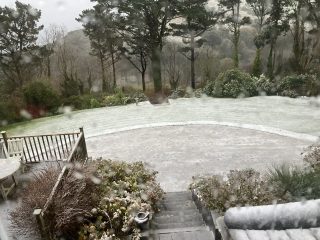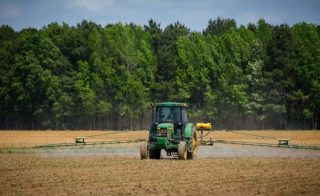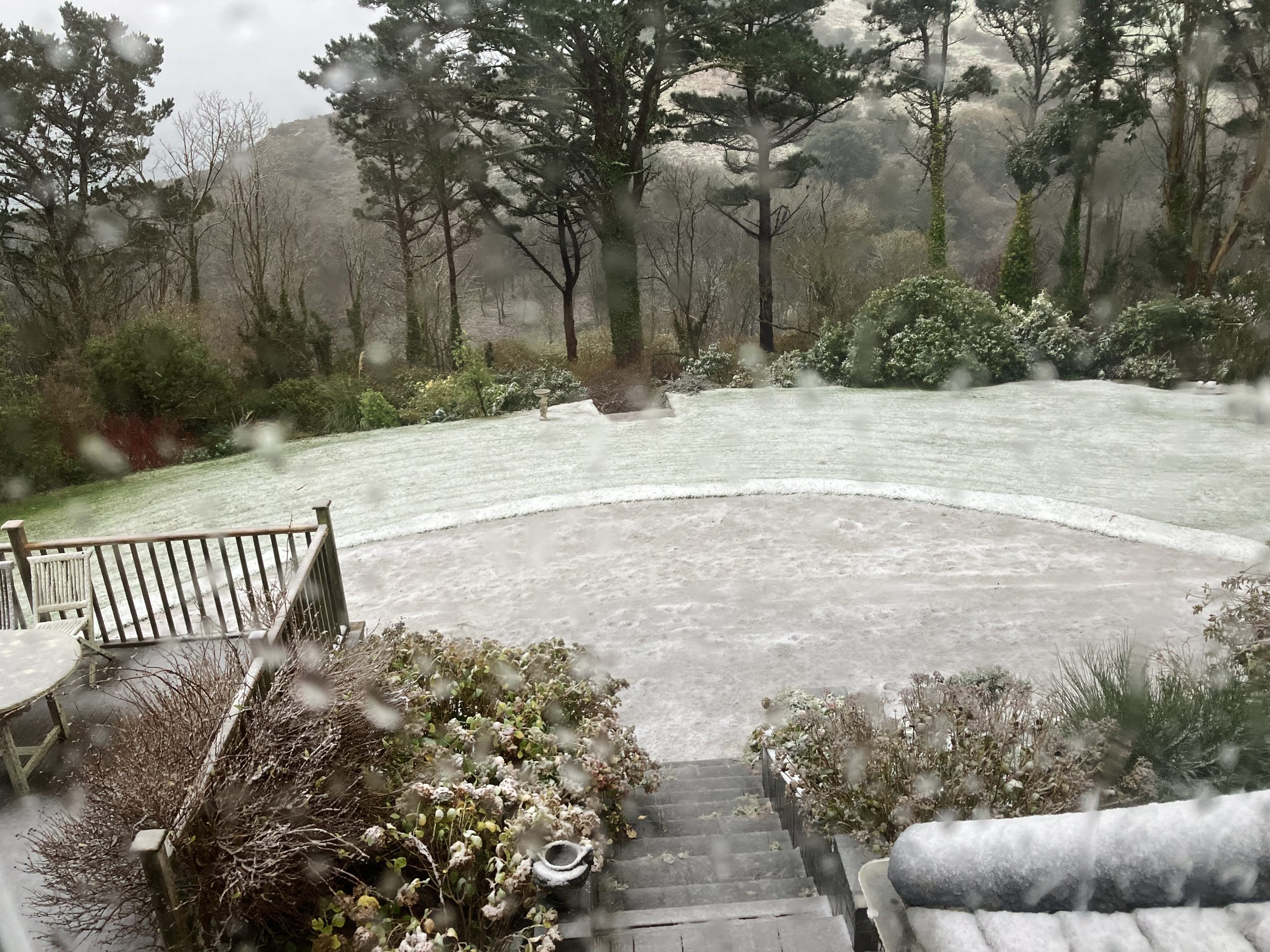The thrills – and spills – of beekeeping with our expert Colin Rees.
So, I’ve been keeping bees for about 26 years and have never had a honey spill.
Whenever I have extracted a full bucket of honey, I always think “What would it be like if the bottom fell out of this 30lb tub of honey and went all over the floor?”. I therefore never relied solely on the handle to carry the tub, always supporting the underneath of the tub so that it didn’t flex and give way. Not that it should. You can buy large tubs of paint at any DIY shop which contain the same kind of weight, so it would not be sensible to supply that paint in tubs that could not take the weight. This gives me confidence that such a catastrophe will not happen.
However (and you can guess what’s coming!), two weeks ago I was warming a tub of granulated ivy honey and wax in the oven to melt the wax so it would float on top of the honey, at which point I could let it cool, remove the solidified disk of wax from the tub, and bottle the honey before it granulated again. I opened the oven door, carefully slid the grid shelf partly out bringing the tub to the front of the oven, and grasped the handle. Next thing I knew, I had a handle in my hand with the tub attached at one side only, the other side of the tub swung downwards, and the force of the melted honey and wax dislodged the lid from the tub allowing the contents to pour over the floor and the rug in front of the oven!!
Yes, there was honey and molten wax everywhere, soaking very conveniently into the rug so that it didn’t spread too far across the kitchen floor! What a disaster! I quickly grabbed the tub and righted it before all the contents emptied out and was left with an absolute mess to clear up before Lin came back into the kitchen (I wasn’t fast enough!). Sympathy I got but it was now down to me to scrape up the mess I had made. I let everything cool for a bit (it’s amazing how clear-thinking one can be in an emergency) after which time the wax was solidifying and I was able to peel most of it off both rug and floor. That just left the honey. This I scraped up with a spatula and scraped it into the compost bin but the honey that had gone into the rug was a different matter. Perhaps the washing machine? The problem with that was that any wax that had also filtered through the rug would deposit itself either on the walls of the washing machine or on the walls of the drain pipes. Inspiration! I would put it outside and let our wet weather wash the honey away. I could then pour boiling water on the wax and hopefully remove that.
A couple of days later, I noticed a dark stain on the rug in the courtyard. Oh, oh! Perhaps Lin’s suggestion of ditching the rug and getting a new one wasn’t such a bad idea after all. But on closer examination I realised what was happening – the bees were cleaning it up for me, and they would do a really thorough job!
So the rug was left for another couple of days, after which time, with no sign of the dark stain, I spotted a black lump. It was a queen bumble bee who had also been feasting on this free food but had stayed too long and was now wet and cold, so couldn’t fly. I picked her up and brought her indoors, put her in a plastic pot so I could see her and gave her some sugar syrup. The following day I put the plastic pot outside on a bench seat in the hope she would fly off. When I checked later, there was water in the base of the pot (it had rained and I’d forgotten about it!) and the bumble queen was looking even more bedraggled than ever, poor thing. Back inside with her, dried the pot, and warmed her up by the oven. She became a lot livelier the following day, so I took her outside again – and watched. Within 30 seconds she flew off, so my rescue attempt had worked! Yay! She will now burrow into the soil or a leaf heap somewhere and continue her interrupted hibernation until the Spring, when she will emerge and build a new nest for next year’s colony. Job done! One learns so much being a beekeeper and not just about honey bees. Fascinating!
As for the bees, well, they’ve not taken too much notice of our appalling weather recently.

When the sun has shone they’ve been out and about, bringing in pollen still, even with the temperature being as low as 8°C. Remember, at 7°C, bees can die very quickly if they stay still on a flower for too long, but I spotted our Mahonia this week, in full bloom, with both honey bees and bumble bees feasting off its pollen and nectar.

I also saw yellow pollen being taken into some hives, so the bees haven’t quite battened down the hatches yet. Mind you, with the snow we had on Thursday, I suspect they’ll be thinking about doing so fairly soon.
I can’t remember if I told you that not only did I lose a nuc to the predation of wasps this year but also two established colonies. I removed the crown board from one of these this week and there were still wasps inside, trawling around for any remnants of honey. Either the queen had died and the colony was dwindling (though it hadn’t appeared to be) or the wasps had infiltrated the hive, one at a time, and acquired the scent of the hive, so the bees did not recognise they were pests and hadn’t thrown them out or killed them. Hopefully this Thursday’s snow will finish them off for the season.
As if the bees didn’t have enough problems with climate change and wasps, the UK government has approved – yet again – a bee-threatening pesticide (the neonicotinoid, thiamethoxam, marketed as Cruiser SB) in a potential breach of environmental law.

The approval was granted as an emergency authorisation for use on sugar beet crops in East Anglia, so we’re relatively safe down here in Cornwall.
However, Cruiser SB poses risks to honey bees, other pollinators, and freshwater aquatic life. These pollinators are crucial for maintaining the health of our environment and food systems. But the active ingredient in the pesticide, thiamethoxam, is a serious potential threat to pollinators. A report by the Health and Safety Executive (HSE) and the Expert Committee on Pesticides expressed serious concerns, pointing out that even non-lethal doses of thiamethoxam could compromise pollinators’ ability to forage and navigate, potentially leading to a reduction in honey bee survival.
Cruiser SB belongs to a group of pesticides called neonicotinoids, and is already banned in the EU. These chemicals can remain active in soil for years, making their way into streams and rivers. Recent studies have found more than one in ten English rivers contain them at levels unsafe for aquatic life.
So this begs the question, why are bees and other pollinators so vital to the environment?
Crop pollination: Honey bees are major pollinators of many food crops, including fruits, vegetables, nuts, and oilseeds. Approximately one-third of the world’s food supply is dependent on pollination, and honey bees contribute significantly to the production of a variety of crops.
Biodiversity: Pollination is essential for the reproduction of many wild plants, contributing to the maintenance and diversity of ecosystems. Healthy ecosystems, in turn, support a wide range of plant and animal species.
Food chain: Pollination is a critical link in the food chain. Many herbivorous animals depend on the healthy plants that result from successful pollination, sustaining, in turn, their predators.
Seed production: Pollination is essential for the production of seeds, ensuring the next generation of plants. This is crucial for the maintenance and regeneration of plant populations.
There is an on-going decline in honey bee populations currently, which is a cause for concern globally, as it could have far-reaching consequences for agriculture and ecosystems. Efforts to protect honey bees and other pollinators are essential for maintaining the health of ecosystems and ensuring food security, so a warning has been sent to the UK’s environmental watchdog that the government may have breached environmental law by approving the pesticide for use.
The approval was made by the Department for the Environment, Food and Rural Affairs (Defra). Contrary to the advice of a number of expert public bodies, the government has approved a pesticide that is banned in the EU because of the risks it poses to bees.
This risk could be compounded in coming years if the government continues to grant emergency authorisations like this one, on what is seen to be an unlawful basis. This is despite numerous assurances given by the government that the UK will maintain and increase standards of environmental protection.
Farmers are the custodians of much of our natural environment. The government must fully support them in making the switch to using environmentally sustainable methods of pest control that work with nature, instead of continuing to approve pesticides that carry risks of environmental harm.
Wishing you all an enjoyable Christmas and a Healthy and Happy New Year.
Colin Rees 07939 971104 colinbeeman@aol.com
01872 501313

